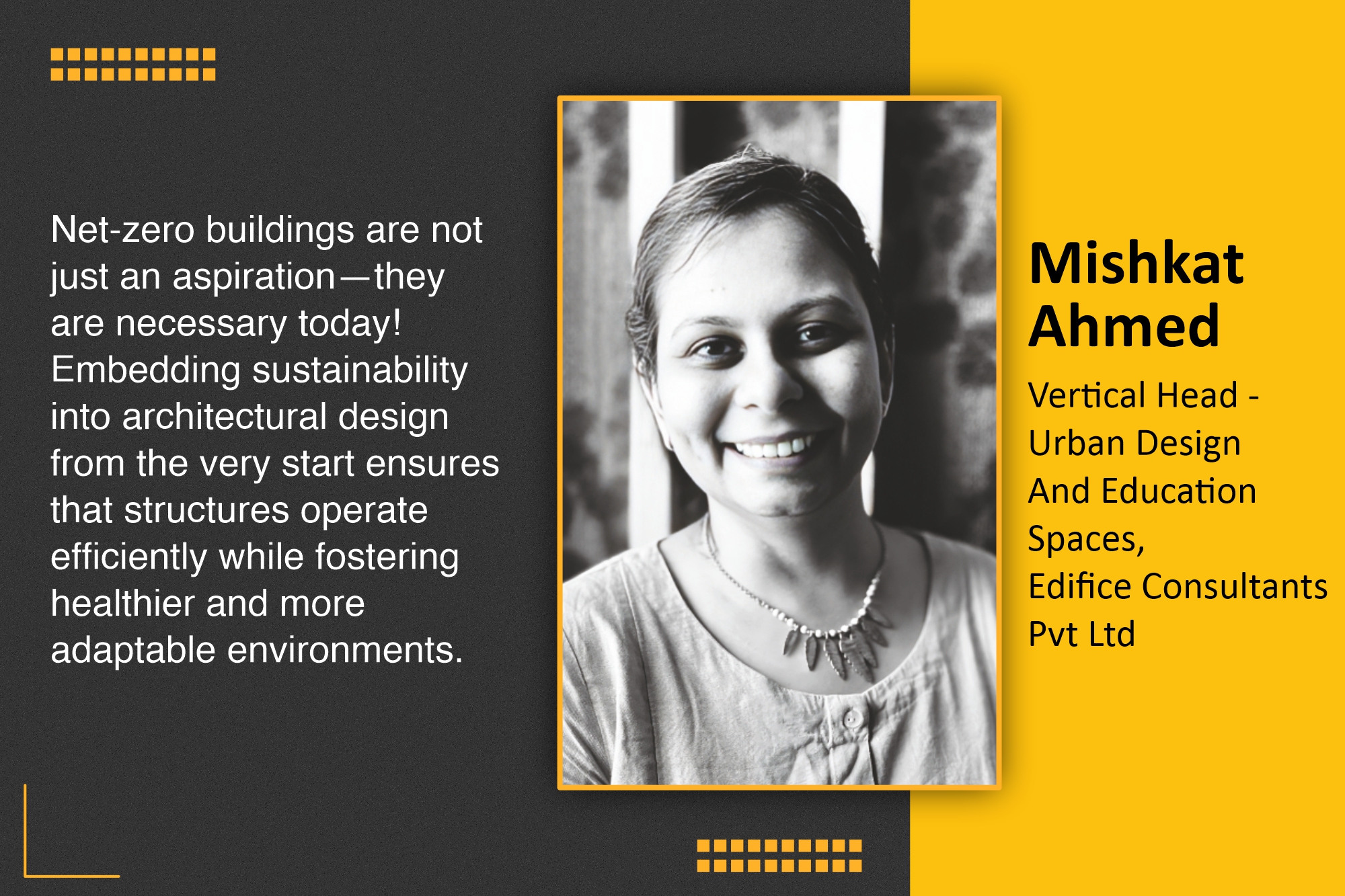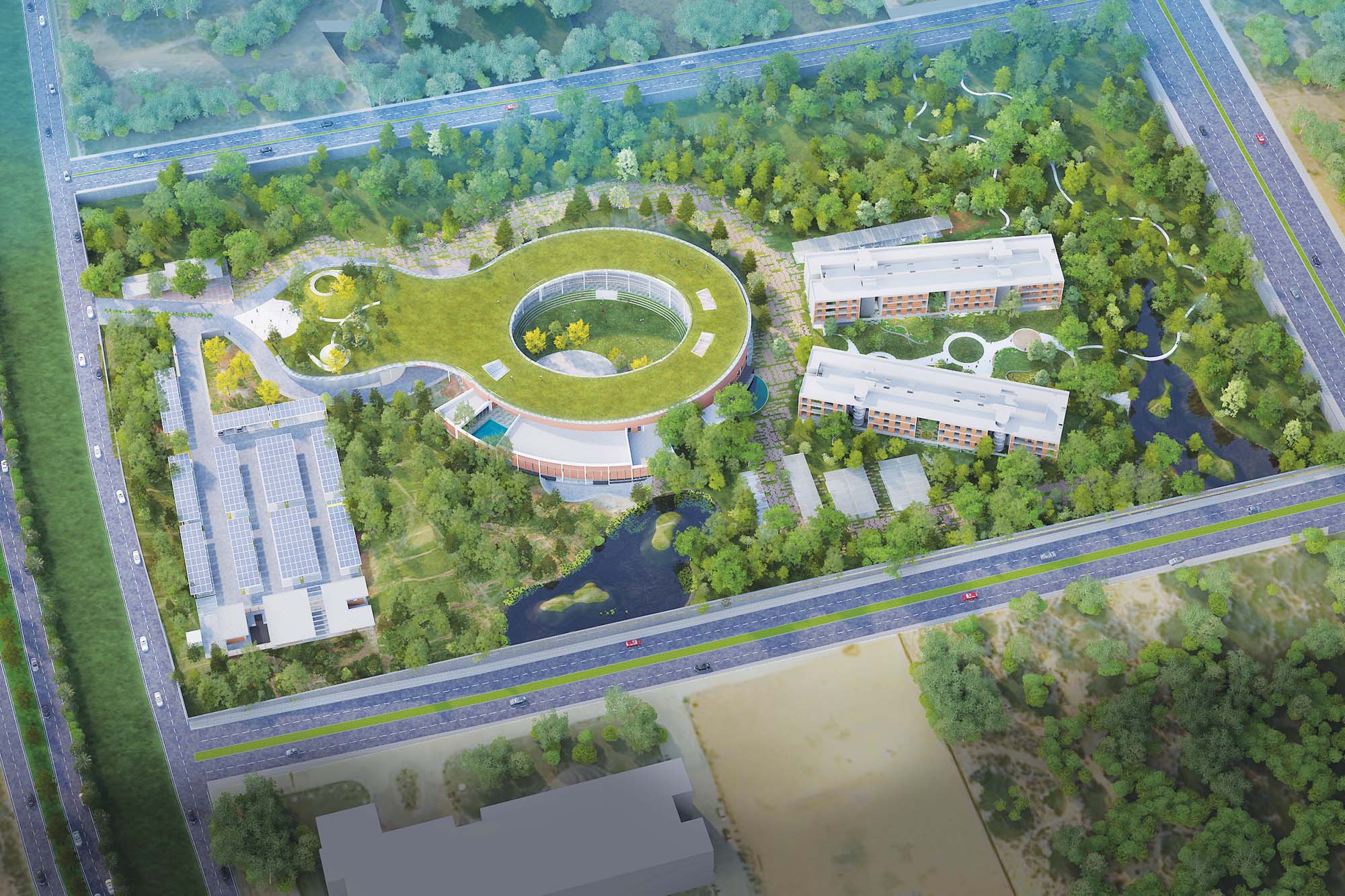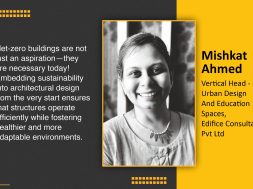Designing for a net-zero future

Mishkat Ahmed analyses why a holistic approach, encompassing passive design, renewable energy sources, and biophilic elements, is essential to achieving net zero.
Sustainable architecture is fundamental to shaping a resilient and responsible built environment. Prioritising energy efficiency and environmental responsibility ensures that buildings enhance occupant well-being while reducing ecological impact. Since occupants spend significant time indoors, access to natural light, fresh air/ventilation, and thermal comfort are essential for quality of life and productivity. For buildings to be truly sustainable, they must integrate energy-efficient strategies from the outset.
Key architectural strategies for net-zero buildings
Passive design for energy efficiency
Strategic building orientation and spatial planning can significantly minimise energy consumption. Some strategies include reducing reliance on artificial lights, increasing cross-ventilation, and diligent façade design. Lights are major elements of energy consumption. Reliance on artificial lighting can be reduced by maximising daylight through well-placed windows, skylights, and light shelves. Cross-ventilation and stack effect principles enhance indoor air quality while decreasing dependence on mechanical ventilation. Similarly, glare into interior spaces can be avoided by appropriate façade designs to ensure the indoor comfort of the occupant.
High-performance building envelopes
Building envelopes are an important element in ensuring occupant wellness and building performance. A well-insulated building envelope significantly improves the energy efficiency of the building. Features like energy-efficient glazing, insulated walls, and reflective roofing help maintain thermal comfort while reducing heating and cooling demands. Shading devices, including overhangs, louvres, and green facades, further help regulate indoor temperatures. A current trend across the world is the concept of green roofs. These roofs, when well-designed, can reduce the indoor temperature by 2-3°C and provide long-term energy savings.

Integrating renewable energy sources
Incorporating renewable energy sources is a crucial means to achieve net zero. These include photovoltaic panels, wind turbines, and geothermal systems, which can significantly offset energy consumption. Integrating solar panels into rooftops and façades allows buildings to generate a substantial amount of their energy needs. Most importantly, with water becoming a scarce resource daily, recycling, harvesting, and sourcing water from within the development itself can result in significant energy savings and should be one of the key targets.
Low-carbon HVAC strategies
HVAC systems are a key contributor to heat. Passive cooling techniques—such as wind towers, evaporative cooling, and radiant cooling—enhance indoor comfort while minimising energy use. Naturally ventilated spaces further reduce the dependence on mechanical climate control. It is important for architects to consider passive cooling techniques while designing, especially in large buildings.
Biophilic and outdoor environments
With shrinking green spaces, integrating greenery within and around buildings is essential to support air quality, biodiversity, and occupant well-being. Green roofs, indoor plants, and shaded courtyards create healthier environments. Outdoor breakout spaces foster collaboration, relaxation, and engagement with nature. By reducing energy consumption, utilising renewable technologies, and embracing biophilic principles, architects can shape a future where buildings harmonise with nature and enhance the human experience.
For more details, visit: https://www.edifice.co.in/
Cookie Consent
We use cookies to personalize your experience. By continuing to visit this website you agree to our Terms & Conditions, Privacy Policy and Cookie Policy.










